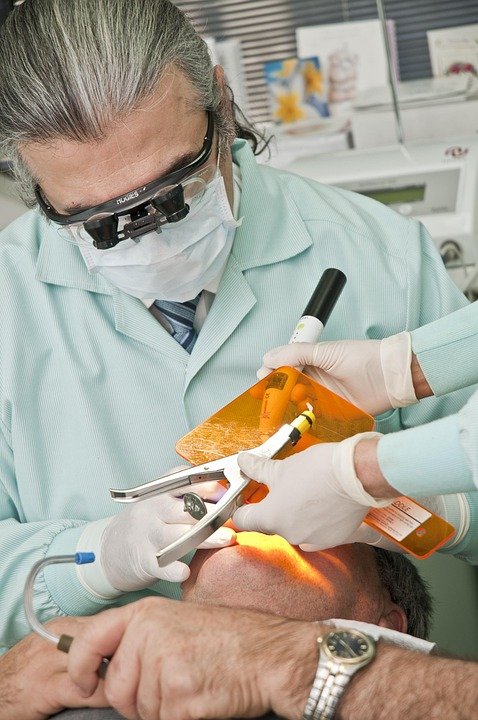What happens after a dental consultation
Okay, so I just had a dental consultation for some pretty significant pain in my upper left jaw and some sensitivity on a few other teeth. The dentist took x-rays, poked around, and talked to me about what he thinks is going on. He mentioned a possible root canal on that one tooth, and a few fillings for the sensitivity, plus a cleaning. I’m still kind of overwhelmed.
My question is, what’s the typical process after that initial consultation? He gave me a treatment plan and cost estimate, which I’m reviewing. But what happens next? Am I expected to schedule everything right away? Can I get a second opinion? How long is that treatment plan valid for? What if I want to prioritize certain procedures over others? I’m also worried about the cost; are there payment options I should be exploring? I just want to understand what my options are and what I should be doing now that I have the treatment plan.
Answer
After a dental consultation, a series of events and actions typically follow, tailored to the individual patient’s needs and the findings of the examination. These can include:
1. Treatment Planning:
- Development of a Customized Plan: The dentist will create a treatment plan based on the diagnosis made during the consultation. This plan outlines the recommended procedures, the order in which they should be performed, and the expected outcomes.
- Discussion of Alternatives: If multiple treatment options exist for a particular condition, the dentist will explain each option, including its pros and cons, associated costs, and potential risks. This allows the patient to make an informed decision about which treatment path best suits their needs and preferences.
- Prioritization: The dentist will help the patient prioritize treatments, especially if there are several issues to address. This prioritization is often based on the urgency of the problem (e.g., addressing pain or infection first), the patient’s concerns, and the overall impact on oral health.
2. Financial Arrangements:
- Cost Estimation: A detailed estimate of the cost of the proposed treatment plan will be provided. This estimate should break down the costs for each procedure, including materials, lab fees, and other associated expenses.
- Insurance Verification and Assistance: The dental office staff will often assist the patient in verifying their dental insurance coverage and understanding their benefits. They can help determine the expected portion covered by insurance and the patient’s out-of-pocket expenses.
- Payment Options: The office will discuss available payment options, which may include cash, credit cards, checks, financing plans (e.g., CareCredit), or in-house payment plans. They’ll explain the terms and conditions of each option.
3. Scheduling of Appointments:
- Booking Future Appointments: Based on the treatment plan and the patient’s availability, the dental office will schedule the necessary appointments. The frequency and duration of appointments will depend on the complexity of the treatment.
- Pre-operative Instructions: If a procedure requires any pre-operative preparation (e.g., avoiding certain medications, fasting), the patient will receive detailed instructions to follow before the appointment.
4. Further Diagnostic Procedures (if needed):
- Ordering Additional Tests: In some cases, the dentist may require additional diagnostic procedures to gather more information before proceeding with treatment. This might include:
- Specialized X-rays: Such as cone-beam computed tomography (CBCT) for 3D imaging.
- Biopsies: To examine suspicious tissue.
- Cultures: To identify specific bacteria or fungi in cases of infection.
- Referrals: If the patient requires specialized care beyond the dentist’s scope of practice, a referral to a specialist (e.g., endodontist, periodontist, oral surgeon, orthodontist) will be made. The referral process will involve providing the patient with the specialist’s contact information and often sending relevant records (e.g., X-rays, consultation notes) to the specialist’s office.
5. Oral Hygiene Instructions and Recommendations:
- Reinforcement of Proper Techniques: The dentist or dental hygienist will review and reinforce proper oral hygiene techniques, including brushing, flossing, and using other interdental cleaning aids.
- Personalized Recommendations: Based on the patient’s specific needs and risk factors (e.g., gum disease, cavities, sensitivity), the dentist will provide personalized recommendations for oral hygiene products, such as specific types of toothpaste, mouthwash, or dental floss.
- Dietary Advice: The dentist may offer dietary advice to help reduce the risk of cavities and other oral health problems. This may include limiting sugary and acidic foods and drinks and promoting a balanced diet.
6. Patient Education and Communication:
- Answering Questions: The dentist and staff will address any questions or concerns the patient may have about the treatment plan, procedures, or other aspects of their oral health.
- Providing Educational Materials: The patient may be provided with educational brochures, videos, or online resources to help them better understand their condition and treatment options.
- Follow-up Communication: The dental office may follow up with the patient after the consultation to answer any additional questions, confirm appointments, or ensure they are comfortable with the treatment plan.
7. Documentation:
- Recording Findings: The dentist will meticulously document all findings from the consultation, including the patient’s medical and dental history, examination results, diagnosis, treatment plan, and any recommendations made.
- Updating Patient Records: The patient’s dental record will be updated with all relevant information from the consultation.

Post Comment